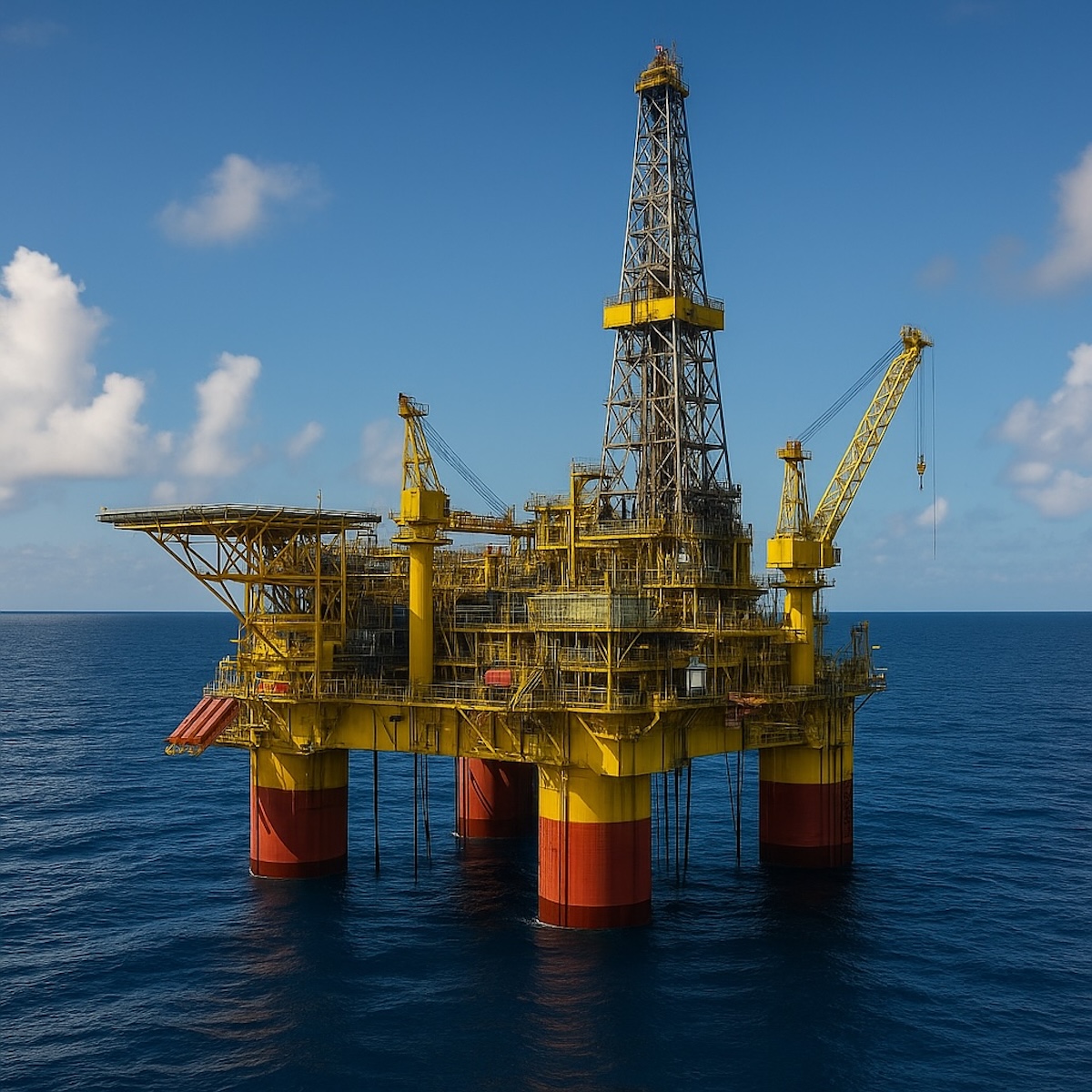Petrobras (PBR ADR, PETR3, PETR4) is Latin America’s largest energy company and one of the world’s biggest oil producers. The company plays a vital role in Brazil’s economy, not only as a state-controlled enterprise but also as a major global exporter of high-quality crude.
Petrobras today operates with world-class upstream assets, growing dividend payouts, and robust free cash flow — but is also influenced by political decisions. This analysis covers business segments, strategy, ongoing projects, Q1 2025 financial results, valuation, debt profile, and how Petrobras compares to global peers.
🏗️ Petrobras Business Segments
1. Exploration & Production (E&P) — Upstream
- Accounts for the majority of revenues and profits.
- Focus on pre-salt fields offshore Brazil, among the world’s most productive assets with low lifting costs (~$5–7 per barrel).
- Recent output: ~2.8 million barrels of oil equivalent/day (boe/d).
2. Refining, Transportation & Marketing (RTM) — Downstream
- Operates 11 refineries in Brazil after recent asset divestments.
- Involved in the production of gasoline, diesel, jet fuel, petrochemicals.
3. Gas & Power
- Includes natural gas processing, transportation, and thermoelectric power generation.
4. Renewables and Low-Carbon Initiatives (Early Stage)
- Small but growing focus on renewable diesel, biofuels, and carbon capture.
🚀 Petrobras Strategy
✅ Focused on Core Oil Production
- Concentrating capital on pre-salt offshore fields, which generate higher margins and lower carbon intensity.
✅ Selective Downstream and Divestments
- Pause in aggressive refinery divestments under current government, but still focused on improving refinery efficiency.
✅ Growing Natural Gas and Power Business
- Expanding natural gas availability within Brazil for industrial use and power generation.
✅ Energy Transition (Moderate Pace)
- Investment in biorefinery, carbon capture, and emissions reductions — but fossil fuels remain the focus.
✅ Shareholder Returns
- Strong commitment to dividends and buybacks as long as Brent remains favorable and balance sheet metrics are strong.
🏗️ Ongoing Projects
🔥 Búzios Field Development
- World’s largest deepwater field.
- Currently producing over 900,000 boe/d, with plans to exceed 2 million boe/d by 2030 through new FPSOs (Floating Production Storage and Offloading units).
🔥 Mero Field (Libra Block)
- Partnership with Shell, TotalEnergies, CNPC, and CNOOC.
- Highly productive pre-salt field with 4 new FPSOs planned.
🔥 Atapu and Sepia Expansion
- Recently acquired stakes in these pre-salt fields are ramping up production.
🔋 Gas Infrastructure Expansion
- New pipeline projects to connect offshore gas to Brazilian domestic markets.
🌱 Biorefinery and Renewable Diesel Projects
- Building pilot facilities for renewable diesel and sustainable aviation fuel (SAF).
📊 Q1 2025 Financial Results (in USD)
| Metric | Q1 2025 | YoY Change |
|---|---|---|
| Revenue | $24.6 billion | –9% |
| EBITDA | $13.1 billion | –7% |
| Net Income | $6.15 billion | –10% |
| Production Volume | 2.8 million boe/d | +1% |
| Capex | $2.7 billion | +5% |
| Free Cash Flow | $7.9 billion | –12% |
| Brent Avg. Price | $84/barrel | ↓ from $91 |
👉 Results reflect lower Brent prices YoY but stable production growth. Operational efficiency remains strong.
💰 Valuation (Mid-2025)
| Metric | Value |
|---|---|
| Market Cap | ~$105 billion USD |
| P/E (TTM) | ~4.1× |
| EV/EBITDA | ~2.9× |
| Dividend Yield | ~12–13% (variable) |
| Price/Book | ~1.2× |
Petrobras trades at a deep discount to global oil majors, largely due to perceived political risk and country risk in Brazil.
🌍 Global Peer Comparison
| Company | P/E | EV/EBITDA | Div. Yield | Notes |
|---|---|---|---|---|
| Petrobras | ~4.1× | ~2.9× | ~12–13% | Highest yield, lowest multiples |
| ExxonMobil (XOM) | ~11× | ~6.5× | ~3.3% | Stable, diversified global major |
| Chevron (CVX) | ~12× | ~6.2× | ~4.1% | Similar to XOM, focused in US/Asia |
| Shell (SHEL) | ~9× | ~5.7× | ~4.5% | Heavy LNG and renewables exposure |
| BP (BP) | ~8.5× | ~5.5× | ~4.9% | More aggressive energy transition |
| TotalEnergies | ~8.5× | ~5.5× | ~4.7% | Diversified, growing in renewables |
👉 Petrobras has the highest dividend yield in the world among oil majors, coupled with the lowest valuation multiples.
🏦 Petrobras Debt and Balance Sheet
| Metric | Value |
|---|---|
| Gross Debt | $56.1 billion |
| Net Debt | $42.8 billion |
| Net Debt / EBITDA | 1.0× |
| Target Leverage | 1.0×–1.5× EBITDA |
| Credit Rating | Investment Grade |
- Debt has been reduced significantly over the past decade.
- Leverage is now comfortably low for the industry.
- Free cash flow comfortably covers dividends, capex, and debt repayments.
🧭 Petrobras Investment Outlook
✅ Strengths
- World-class upstream assets (pre-salt fields) with low lifting costs.
- Double-digit dividend yield.
- Strong free cash flow even at $70–$80 Brent.
- Low leverage and investment-grade rating.
⚠️ Risks
- Political interference: government control affects dividend policy, pricing, and investment decisions.
- Exposure to oil price cycles.
- Delay in energy transition compared to European majors.
📌 Conclusion
Petrobras offers one of the most compelling risk-reward profiles in global energy.
- With a P/E under 5, EV/EBITDA under 3, and a dividend yield above 12%, the stock is priced for substantial risk — but with world-class assets and a fortress balance sheet, that risk may be overstated.
For income investors comfortable with emerging market and political risks, Petrobras (PBR, PETR3, PETR4) remains a standout value opportunity.
📬 Follow Easy Brazil Investing for more English-language coverage of Brazil’s best investment opportunities. Or follow us on X


Leave a Reply